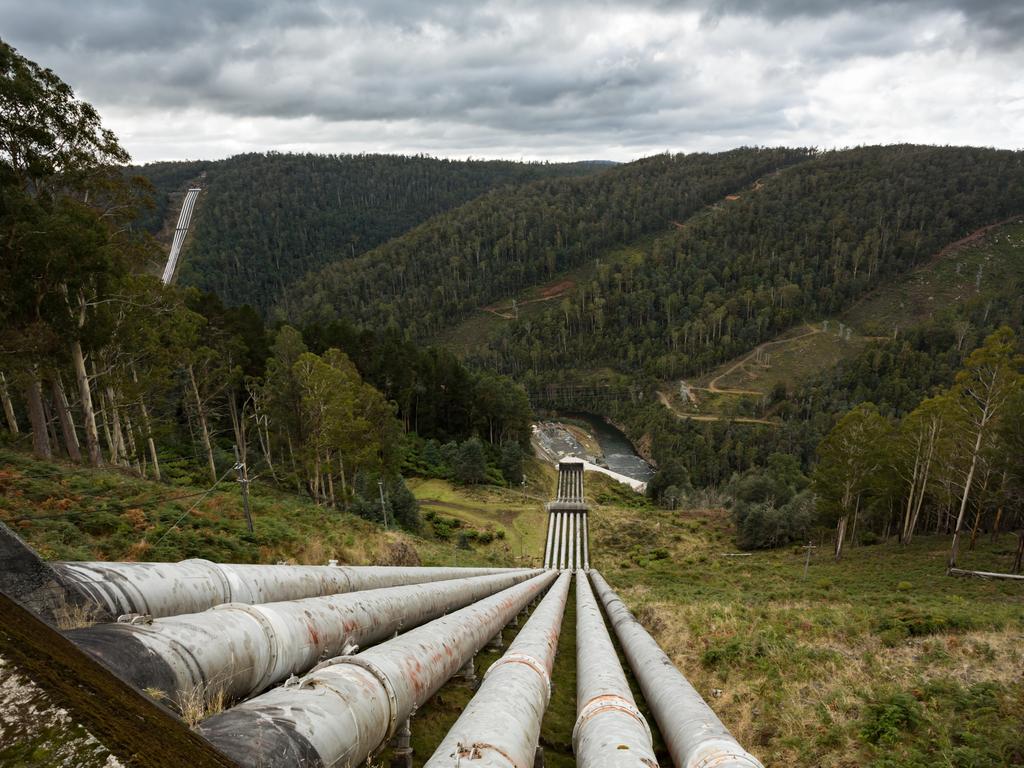‘Battery of the nation’ falling flat as wind rush hit turbulence
The state’s wind rush – trumpeted as key to the national renewables transition – is falling flat, with no new wind farms in almost four years and claims of excessive red tape.

Tasmania’s wind rush – trumpeted as key to the national renewables transition – is out of puff, with no new wind farms in almost four years, as “frustrated” proponents blame “excessive, overly complex” red tape.
The state and federal governments’ vision of Tasmania as the “Battery of the Nation” – supplying renewables to the mainland via a second, $3bn Bass Strait power cable – is based largely on wind development.
However, the last wind farm to start operations was Granville Harbour, in December 2020, and a major proposal for Robbins Island has taken four years to navigate approvals - so far without final tick-off.
“A lot of the project proponents are quite frustrated, and have been for quite a considerable period of time, as to how slow the process has been,” Clean Energy Tasmania chair Ian Jones told The Weekend Australian.
“One of the holdups is the amount of different government business enterprises and bodies and agencies that proponents have to deal with.”
He believed the Battery of the Nation concept remained “alive”, with $25bn in renewable projects proposed for Tasmania, but that it would not reach its potential unless approvals were streamlined.
“When projects take four to five years to get off the ground, that tends to diminish the enthusiasm,” he said.
ACEN Australia has spent four years working on approvals for its $1bn, up to 900MW, 100-turbine wind farm on the 9900ha Robbins Is, in the state’s far northwest.
It is yet to receive federal environmental approval, with officials raising concerns over impacts on Tasmanian devils and orange-bellied parrots.
While winning a legal battle over state approvals, it has now been rocked by government legal advice that its plans breach a state coastal policy ban on building on frontal dunes.
The state Environment Protection Authority has launched legal action over the alleged breach. However, the state Liberal minority government has vowed to retrospectively amend the coastal policy to save the project.
There are concerns this change could green-light a range of inappropriate developments along Tasmania’s coastline. “This is opening a Pandora’s box for development in the coastal zone, potentially for things like canal estates,” said bird ecologist Eric Woehler.
State Labor opposition leader Dean Winter said his party would back the coastal policy change, ensuring it passes the lower house, but its fate in the independent-dominated upper house is uncertain.
Mr Winter warned energy prices would surge if new transmission infrastructure was not matched by new generation.
“We simply haven’t been able to gear up to get anything approved,” Mr Winter said. “The policy settings are clearly wrong… If we are only building transmission then prices will go up.”
The state’s first “renewable energy zone” south of Burnie has been criticised both by locals, concerned about new turbines and transmission lines, and the renewables industry.
“Locals aren’t happy,” said independent MP for Braddon Craig Garland. “They are worried about the values of their property going down, having stuff imposed upon them, and wildlife corridors and wedge-tailed eagles (being impacted).”
Mr Jones said proponents were “shocked” the zone did not include the region’s two biggest proposed wind farms: Robbins Is and Whaleback Ridge.
State Energy Minister Nick Duigan defended the zone, saying its purpose was “to ensure new renewable generation is built in the right place, for the least cost, and ensuring benefits flow back to the communities”.
Mr Duigan defended delays in approving wind farms, saying they “must go through the appropriate approvals processes - and these do take time”. “The Tasmanian government is implementing a Renewable Energy Approval Pathway to support projects,” he said.
The coastal policy change was needed to “provide certainty for existing infrastructure”, he said.
The push for offshore wind has also hit a snag, Mr Jones said the proposed offshore wind farm zone north of Tasmania was mostly too deep for anchored turbines or too shallow for floating turbines.
Under federal law, expansion of the offshore zone would restart the consultation process. A spokesman for federal Energy Minister Chris Bowen said he was considering submissions and a final zone would “balance the views of local communities and industries” with the environment and “future energy security, supply”.
Federal Environment Minister Tanya Plibersek’s department said it was awaiting “outstanding information” on Robbins Is. Once received, the minster would make a decision within 30 business days.








To join the conversation, please log in. Don't have an account? Register
Join the conversation, you are commenting as Logout